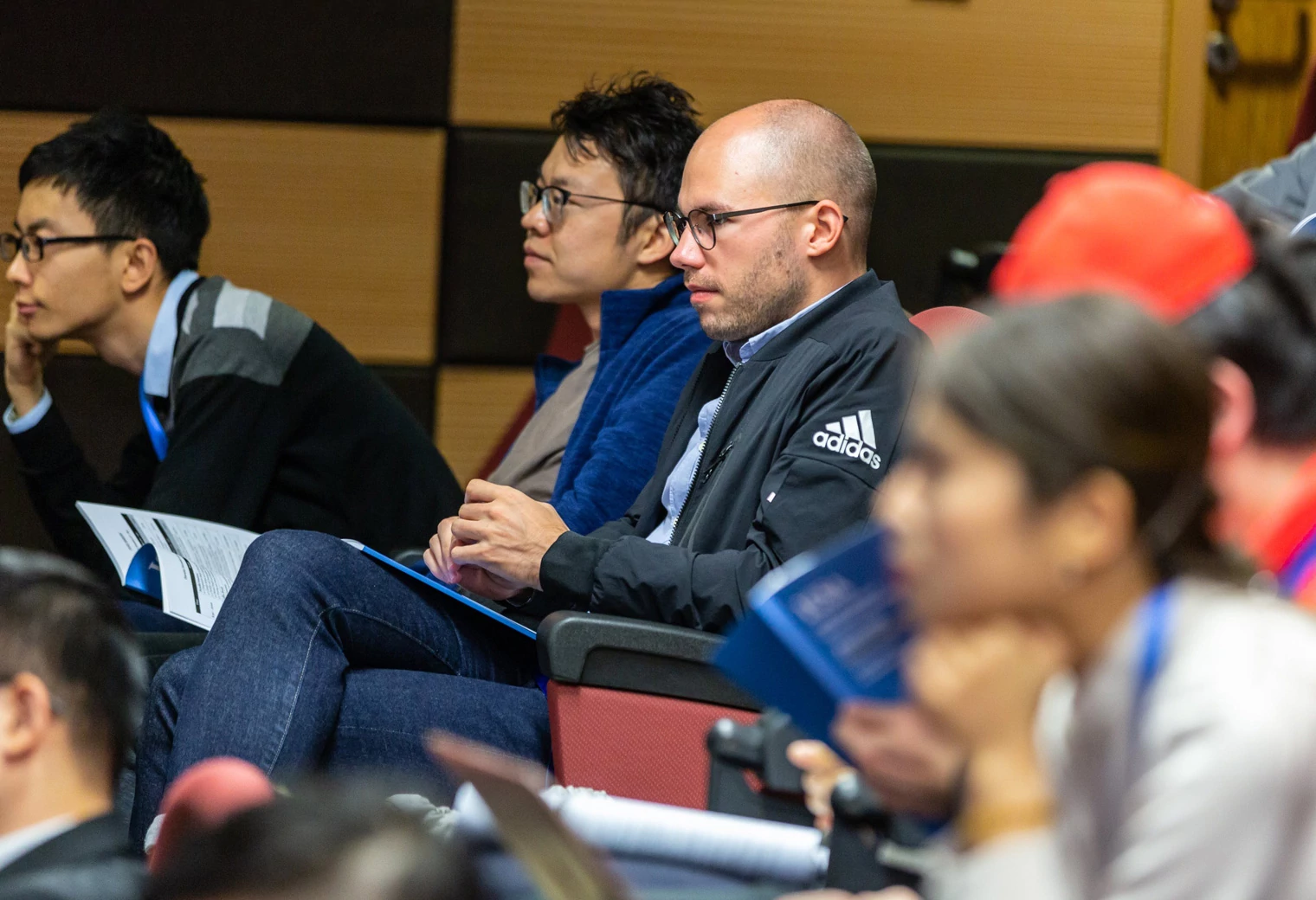Internationally-accredited training courses in TESOL have a reputation of being very intensive, with four weeks of study covering many aspects of teaching and learning, language awareness, and the stresses of observed classroom teaching and assignment work. However, course graduates overwhelmingly describe these courses as rewarding and positive formative experiences.
Before deciding to enroll in a CertTESOL or CELTA course, it is a good idea to get to know what is required of you during the weeks of training, so that you are best prepared for the experience.
How intensive is a CertTESOL or CELTA course?
First, a disclaimer: training centers are not lying when they describe the course as intensive. The Ofqual RQF Level 5 rating of the course makes it equal in academic weight to an entire second year of an undergraduate degree.
Consider that this is condensed into four weeks (or twelve weeks part-time) of study, and this will give you some idea of the intensity of the workload involved.
How many hours do trainees work in a typical week?
A course leading to a level 5 qualification in TESOL must contain at least 130 Guided Learning Hours (GLHs), which means that over 30 hours of work per week will be timetabled for you, whether that is classroom teaching, seminars or independent assignment work and lesson planning. This, however, is often only the tip of the iceberg, as things can take significantly longer than this at first.
Trainees typically spend two hours or more planning each lesson for observed teaching practice, which represents a good 23+ hours of work alone. Input seminars typically take up half of the day at the training center, totaling around 15 hours per week.
Then other assignment deadlines have to be met, so depending on your time management and organization for the course, this can be a ‘how long is a piece of string’ question. No matter how you approach the workload on the course, be aware that you will need to have proper time management from day one, and that any work you are given should be completed as soon as possible before more assignments come along. This expectation alone should help you to manage the course better once you start.
What prior knowledge is required to successfully complete a CertTESOL or CELTA course?
These courses are open to anyone who has the motivation and interest to learn more about languages, teaching and learning, and no prior experience or technical knowledge is required.
However, the admission process and the interview for these courses often require candidates to complete a pre-interview task including some language analysis, discussion of teaching methods and experiential content about learners and learning.
Upon acceptance to the course, a further pre-course study is given to trainees to get them thinking about key areas for the course, and to start them thinking about language analysis in more depth. These tasks are essential, and failure to engage with this pre-course content is a significant reason for some trainees to fall behind very quickly, leading to severe problems later in the course.
There simply is not enough time to catch up with missing work when the course starts, as you will be hit with assignment work and a lot of information which assumes knowledge presented in the pre-course information.
In this high-stakes training situation, it is in your best interest to engage with every opportunity you are given to improve your knowledge and skills for the course, from before the course starts.
So, what “content” will you learn during a CertTESOL or CELTA course?
In terms of knowledge, the main areas that trainees develop are their language knowledge, including the terminology we use to describe grammar, vocabulary, types of language activity, etc., and knowledge of teaching and learning methods.
These courses present many different approaches to teaching language, various aspects of learners and learning, classroom routines, and ways of staging lessons, all of which are important to understand before applying them in the classroom in assessed teaching practice lessons.
In addition to knowledge-based input, you will also develop practical skills to ensure that you are giving the learners in your classes what they need to improve in their use of language. This means that you will be evaluating different types of materials and resources, practicing teaching routines with your co-trainees, and reflecting on when these methods might be of use to you in the classroom.
Finally, it is essential that you understand what is required of you in the assessed assignment work that you will submit for the course. For a breakdown of assessed work, you can visit the relevant pages from Trinity College or Cambridge ESOL’s websites, which give a useful overview of the assessed components of the courses.
What is the biggest learning curve during a CELTA or CertTESOL course?
There are two areas of CertTESOL and CELTA courses that stand out as being the most challenging for trainees:
- Assessed Teaching Practice and
- Phonology
Teaching practice (TP) lessons are a challenge due to the high-stress levels that trainees are under from quite early on in the course.
Teaching practice typically starts in the middle of week 1 of the course, after only two or three days of input from seminars and workshops. So, many trainee teachers simply do not feel prepared to jump into the classroom as a real teacher. This fear is mostly unfounded; however, as the principles that you will learn in the first few days of the course will set you up for success no matter who or what you are teaching.
The first time you do anything which puts you so far out of your comfort zone will be a shock, so the theory is that the deep end technique of getting up there and teaching early in the course is the best way to allay the nerves and tension of the situation.
Nine times out of ten, the first lessons are nowhere near as daunting as trainees think, and they go into their second lessons much more prepared from the feedback they received after lesson one.
The second key challenge, phonology, is also something new and strange to most trainees. Learning the International Phonemic Alphabet (the IPA – the ‘alphabet’ of the 44 sounds of standard British English) is not easy. Still, the sooner you start engaging with it and thinking about the sounds of English, the more easily you can break it down yourself.
If you are thinking about doing one of these training courses, now is the time to get familiar with the IPA. There are many resources online to help you with this, and you will have to get to grips with it sooner or later, so start now and reduce the pressure for the course when you do take it!
What assignments will you have to do for a CELTA or a CertTESOL course? Is there an exam?
Although the aims of the CertTESOL and CELTA courses are the same – to develop industry knowledge, awareness of teaching approaches, and classroom teaching skills, the assignments on the two courses differ somewhat in their focus.
Both courses include exams, which test trainees’ language knowledge and require some discussion of teaching and learning, though, as with all assignments, CertTESOL assessment includes greater weighting on the important area of phonology and transcription using the IPA.
Both courses include assignments that focus on a specific learner, though this is more in-depth on the CertTESOL course, and requires deeper analysis of learner language than the assignment on the CELTA course.
Another difference between the two courses is the externally-assessed components:
The CELTA course contains one externally-assessed observed lesson, which can be a daunting experience and requires high performance in the final lesson of the course.
Whereas the Trinity CertTESOL has an externally-moderated face-to-face interview regarding the design and use of materials used by trainees in one of their teaching practice lessons. This can also be somewhat nerve-racking, but this ‘Materials Assignment’ requires trainees to discuss aspects of their development across more of the course, so is perhaps less high-pressure as being observed by a new face in a taught lesson.
Both courses also contain content related to the learning of an unknown foreign language, where trainees become beginner-level students of that language for a few hours, and this forms a specific assignment on the CertTESOL course – the Unknown Language Journal, whereas this content does not have so much weight on the CELTA course.
Conclusion: Finally, both courses require trainees to observe experienced teachers and produce assessed assignments relating to the teaching and learning which trainees see in classrooms at the training center.
To sum up, both the CELTA and CertTESOL require trainees to engage with a very intensive period of work. The details of assessments and required assignments may differ between the courses, though the overall aims of both qualifications are basically the same.
If you are thinking about taking one of these courses, it is advisable to find out more about the requirements of each course and see which approach fits your style of study best. It will be hard work, but you will feel the rewards on finishing, knowing that you have gained a world-class qualification in the language education industry.
This article was originally published in Nov-2019 and was last updated in Jul-2020.
Author: Tom Garside




